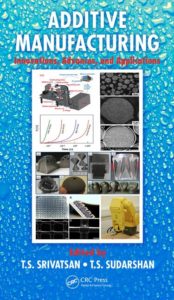Additive Manufacturing Innovations, Advances, and Applications
Additive Manufacturing Innovations, Advances, and Applications
Additive Manufacturing Innovations, Advances, and Applications explores the emerging field of additive manufacturing (AM)―the use of 3D printing to make prototype parts on demand. Often referred to as the third industrial revolution, AM offers many advantages over traditional manufacturing. This process enables users to quickly build three-dimensional objects from the bottom-up, adding material one cross-sectional layer at a time directly from a computer model. This book provides a clear overview of specific technologies related to AM. It covers existing and emerging techniques in AM in use for a wide spectrum of manufacturing applications, and highlights the advantages of each technique with specific references to technological applications.
Introduces Valuable Processes for Making Prototype Parts among Manufacturers of Many Types
The book outlines many of the processes developed using various materials ranging from metals to plastics, and composites to human tissue. It presents recent innovations and potential viable applications that include: near-net shape capabilities, superior design, geometric flexibility, innovations in fabrication using multiple materials, and reduced tooling and fixturing. It also introduces several illustrations and case studies that focus on the present and far-reaching applications, developments, and future prospects of AM technologies.
You can also Read Case Studies in Strategic Planning 1st Edition
Additive Manufacturing Innovations, Advances, and Applications Product details![Additive Manufacturing]()
- Hardcover: 460 pages
- Publisher: CRC Press; 1 edition (September 25, 2015)
- Language: English
- ISBN-10: 1498714773
- ISBN-13: 978-1498714778
- Product Dimensions: 7.2 x 1 x 10.5 inches
- Shipping Weight: 1.6 pound
Additive Manufacturing Innovations, Advances, and Applications, this book:
- Covers the reactive inkjet printing of nylon materials relevant to AM
- Discusses the AM of metals using the techniques of free space deposition and selective laser melting
- Provides a comparison between AM materials and human tissues
- Addresses the use of AM for medical devices and drug and cell delivery
- Focuses on the relevance of AM to rare earth magnets and more
- Additive Manufacturing: Innovations, Advances, and Applications emphasizes the use of AM commensurate with advances in technical applications


Comments are closed.